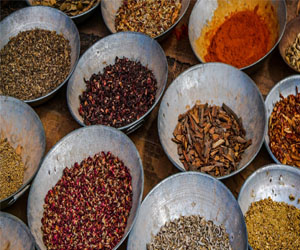


Inflammation is the body's natural response to injury or infection, and it plays a crucial role in healing. However, chronic inflammation is linked to a range of health problems, including heart disease, diabetes, and autoimmune disorders. To counter this issue, many people turn to anti-inflammatory foods, a category of nutrient-rich items known for their ability to mitigate chronic inflammation and promote overall well-being.
 What Are Anti-Inflammatory Foods?
What Are Anti-Inflammatory Foods?
Anti-inflammatory foods are those that help to reduce chronic inflammation in the body. They do this by containing specific compounds that have natural anti-inflammatory properties. These foods include a wide range of fruits, vegetables, nuts, seeds, and herbs.
Some of the most well-known anti-inflammatory foods include:
Berries: Blueberries, strawberries, and raspberries are packed with antioxidants, particularly flavonoids, which have potent anti-inflammatory effects.
Fatty Fish: Salmon, mackerel, and sardines are rich in omega-3 fatty acids, which have been shown to reduce inflammation in the body.
Leafy Greens: Spinach, kale, and Swiss chard are abundant sources of vitamins, minerals, and antioxidants that help combat inflammation.
Turmeric: This spice contains curcumin, a powerful anti-inflammatory compound with a wide range of health benefits.
Nuts And Seeds: Almonds, walnuts, flaxseeds, and chia seeds are high in healthy fats, fiber, and antioxidants that reduce inflammation.
Olive Oil: Extra virgin olive oil is known for its anti-inflammatory properties and is a staple of the Mediterranean diet.
Tomatoes: Tomatoes are rich in lycopene, an antioxidant that helps reduce inflammation.
The Health Benefits Of Anti-Inflammatory Foods
Consuming anti-inflammatory foods can have a profound impact on health. Some of the benefits include:
Reduced Risk Of Chronic Diseases: Chronic inflammation is linked to conditions like heart disease, diabetes, and certain cancers. Anti-inflammatory foods can help lower the risk of these diseases.
Pain Relief: Some people experience a reduction in chronic pain, such as arthritis, when they incorporate anti-inflammatory foods into their diet.
Improved Digestion: Anti-inflammatory foods can support a healthy gut, reducing digestive discomfort and inflammation-related issues.
Mood And Cognitive Health: Emerging research suggests that chronic inflammation may play a role in mood disorders. Anti-inflammatory foods may have a positive impact on mood and cognitive function.
Incorporating Anti-Inflammatory Foods Into Your Diet
Integrating anti-inflammatory foods into your diet doesn't have to be complicated. Here are some tips:
Balance Your Plate: Aim to fill half your plate with fruits and vegetables, focusing on a variety of colorful options.
Opt For Whole Grains: Choose whole grains like brown rice, quinoa, and whole wheat bread over refined grains.
Lean Protein: Include fatty fish, lean poultry, and plant-based protein sources like beans and lentils.
Healthy Fats: Use olive oil for cooking and dressings, and incorporate nuts and seeds into your meals and snacks.
Herbs And Spices: Experiment with herbs like turmeric, ginger, and cinnamon to add flavor and anti-inflammatory benefits to your dishes.
Chronic inflammation can lead to a variety of health issues, but the incorporation of anti-inflammatory foods into your diet can be a proactive step toward wellness. By embracing a diet rich in these foods, you can help reduce inflammation, improve your overall health, and promote a sense of well-being. It's a natural, delicious, and accessible path to better health.
A Path To Optimal Health
 The Role Of Vitamins
The Role Of Vitamins
Vitamins are involved in a multitude of physiological processes, including energy production, immune system function, and the maintenance of healthy skin, eyes, and bones. They act as cofactors in enzymatic reactions that are crucial for life. Each vitamin has specific roles and functions, and a deficiency in any of them can lead to various health problems.
Fat-Soluble vs. Water-Soluble Vitamins
Vitamins can be categorized into two groups: fat-soluble and water-soluble. Fat-soluble vitamins (A, D, E, and K) are stored in the body's fat tissues and liver. Excess amounts can accumulate, so it's essential to monitor their intake. Water-soluble vitamins (C and the B-complex vitamins, including B1, B2, B3, B5, B6, B7, B9, and B12) are not stored in the body, so regular intake is necessary to maintain optimal health.
The Importance Of A Balanced Diet
A balanced diet that includes a wide variety of foods is the most reliable way to ensure adequate vitamin intake. Fruits, vegetables, whole grains, lean proteins, and healthy fats should all be part of your daily menu. Eating a rainbow of fruits and vegetables is an excellent strategy to obtain a diverse range of vitamins and minerals.
A Culinary Journey Of Sensory Delights
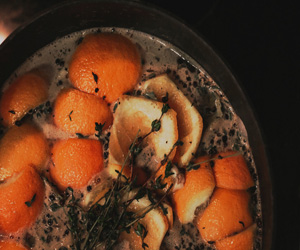 The Appeal Of Flavorful Feasts
The Appeal Of Flavorful Feasts
Why are flavorful feasts so appealing? Here are some compelling reasons:
1. Celebration: Flavorful feasts are often associated with special occasions, holidays, and gatherings. They serve as a way to commemorate and celebrate the moments that matter most.
2. Variety: These feasts offer a diverse selection of dishes that cater to different palates. From savory to sweet, from mild to spicy, there's something for everyone to enjoy.
3. Connection: Preparing and sharing a flavorful feast can strengthen bonds and create a sense of connection. It's a communal experience that fosters togetherness.
Health And Dietary Considerations
 Health Benefits
Health Benefits
For individuals with celiac disease or gluten sensitivity, adopting a gluten-free lifestyle is non-negotiable. Consuming gluten can lead to severe health consequences and discomfort. However, even for those without these conditions, there are potential health benefits to going gluten-free.
Some people report improved digestion, increased energy, and reduced gastrointestinal discomfort when they eliminate gluten from their diets. This could be attributed to the fact that many gluten-containing foods are also highly processed and high in refined carbohydrates. A gluten-free diet can encourage individuals to choose more whole and naturally gluten-free foods like fruits, vegetables, lean proteins, and legumes.
Potential Drawbacks
While the gluten-free lifestyle offers various benefits, it's essential to be mindful of potential drawbacks. A gluten-free diet can be challenging to maintain, as gluten is pervasive in many common foods. Additionally, gluten-free products can be more expensive, and some may lack essential nutrients like fiber and certain vitamins.
More Than Just Food For The Body
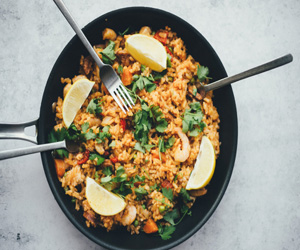 Nourishing dishes are characterized by their ability to provide comfort and solace. They are often the recipes that offer a warm embrace during challenging times, a source of solace when we seek refuge from the chaos of the world. Whether it's a bowl of hearty chicken soup on a cold winter day, a plate of creamy macaroni and cheese, or a fragrant curry simmering on the stove, these dishes provide more than just sustenance; they offer a sense of well-being.
Nourishing dishes are characterized by their ability to provide comfort and solace. They are often the recipes that offer a warm embrace during challenging times, a source of solace when we seek refuge from the chaos of the world. Whether it's a bowl of hearty chicken soup on a cold winter day, a plate of creamy macaroni and cheese, or a fragrant curry simmering on the stove, these dishes provide more than just sustenance; they offer a sense of well-being.
At the heart of nourishing dishes is the concept of emotional nourishment. These are the meals that evoke feelings of nostalgia, family, and home. They remind us of simpler times, of the loving hands that prepared them, and of the comforting embrace of familiar flavors. Nourishing dishes go beyond filling the belly; they fill the heart and the soul.
One remarkable aspect of nourishing dishes is their versatility. They can be found in virtually every culture and cuisine, reflecting the diversity of the world's culinary traditions. From the soul-warming stews of Europe to the fiery curries of Asia, and from the rich and hearty comfort foods of the Americas to the simple, wholesome dishes of the Mediterranean, nourishing dishes showcase the breadth of global gastronomy and the unique way each culture creates meals that comfort and satisfy.
From Kitchen To Plate
 Nurturing Ingredients: The choice of ingredients can be a powerful source of inspiration. Fresh, seasonal, and locally sourced ingredients often take center stage in the creative process. The urge to transform these ingredients into a delicious meal can drive home cooks to experiment with innovative recipes.
Nurturing Ingredients: The choice of ingredients can be a powerful source of inspiration. Fresh, seasonal, and locally sourced ingredients often take center stage in the creative process. The urge to transform these ingredients into a delicious meal can drive home cooks to experiment with innovative recipes.
Cookbooks And Celebrity Chefs: Cookbooks and celebrity chefs have an enduring influence on cooking inspiration. The well-curated pages of a cookbook or the charismatic presentations of celebrity chefs on television can spark ideas and encourage home cooks to try new recipes and techniques. The artful fusion of flavors and methods can be especially inspiring.
Personal History And Memories: Many of us find inspiration in our personal history and memories. Grandma's apple pie, dad's famous barbecue sauce, or the scent of holiday cookies can transport us back in time, rekindling memories and emotions that inspire us to recreate those beloved dishes.
Creativity As A Driving Force: Cooking inspiration is a powerful force that fuels creativity in the kitchen. It encourages home cooks to think outside the box, experiment with ingredients, and create their unique signature dishes. This experimentation often leads to culinary masterpieces that are deeply satisfying and reflective of the cook's personal style.
Savoring The Culinary Magic
 A Culinary Journey: Delightful dinners often take you on a culinary journey. They can transport you to different parts of the world, allowing you to savor the flavors of exotic cuisines. This culinary exploration is not limited to professional chefs; anyone with a passion for cooking can embark on this adventure. With the right ingredients, recipes, and a dash of curiosity, you can bring the world to your dinner table.
A Culinary Journey: Delightful dinners often take you on a culinary journey. They can transport you to different parts of the world, allowing you to savor the flavors of exotic cuisines. This culinary exploration is not limited to professional chefs; anyone with a passion for cooking can embark on this adventure. With the right ingredients, recipes, and a dash of curiosity, you can bring the world to your dinner table.
The Joy Of Sharing: Delightful dinners are not just about the food but also the company you share them with. Whether it's with family, friends, or that special someone, the act of sharing a meal fosters connection and strengthens bonds. It's a time to catch up, laugh, and create lasting memories.


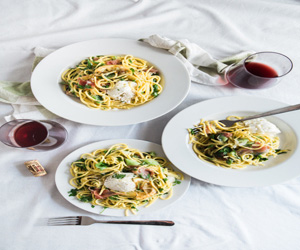


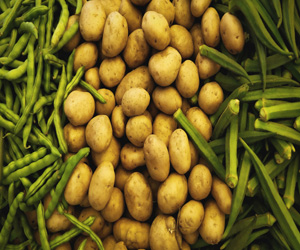
Crafting The Perfect Liquid Symphony
 Latte Art: A Visual Symphony
Latte Art: A Visual Symphony
Latte art, the most recognizable form of espresso artistry, is a visual symphony that unfolds in your cup. Baristas use steamed milk to create intricate designs on the surface of espresso-based beverages, such as lattes and cappuccinos. Hearts, tulips, rosettes, and swans are just a few of the designs that baristas can craft with a steady hand and a keen eye.
Creating latte art is a delicate process that requires the perfect balance of milk and espresso. The milk must be steamed to the right temperature and frothed to achieve the ideal microfoam. The barista then pours the milk into the espresso, using a combination of pouring technique and wrist movement to shape the design. The result is not only visually stunning but also enhances the overall coffee-drinking experience.
Espresso Machine Mastery
Behind every visually striking latte art design lies a skilled barista who has mastered the espresso machine. The espresso machine, with its precise control over temperature and pressure, is the conductor's wand in this symphony of flavors and aesthetics. Baristas adjust variables such as grind size, shot duration, and water temperature to ensure the espresso shot's flavor is in perfect harmony with the milk and the art that adorns it.
The Intersection Of Science And Art
Espresso artistry is a unique intersection of science and art. Baristas must understand the chemical reactions that occur during coffee extraction, the physics of milk frothing, and the principles of fluid dynamics. This scientific foundation, combined with creativity and practice, allows them to consistently create visually stunning and delicious drinks.